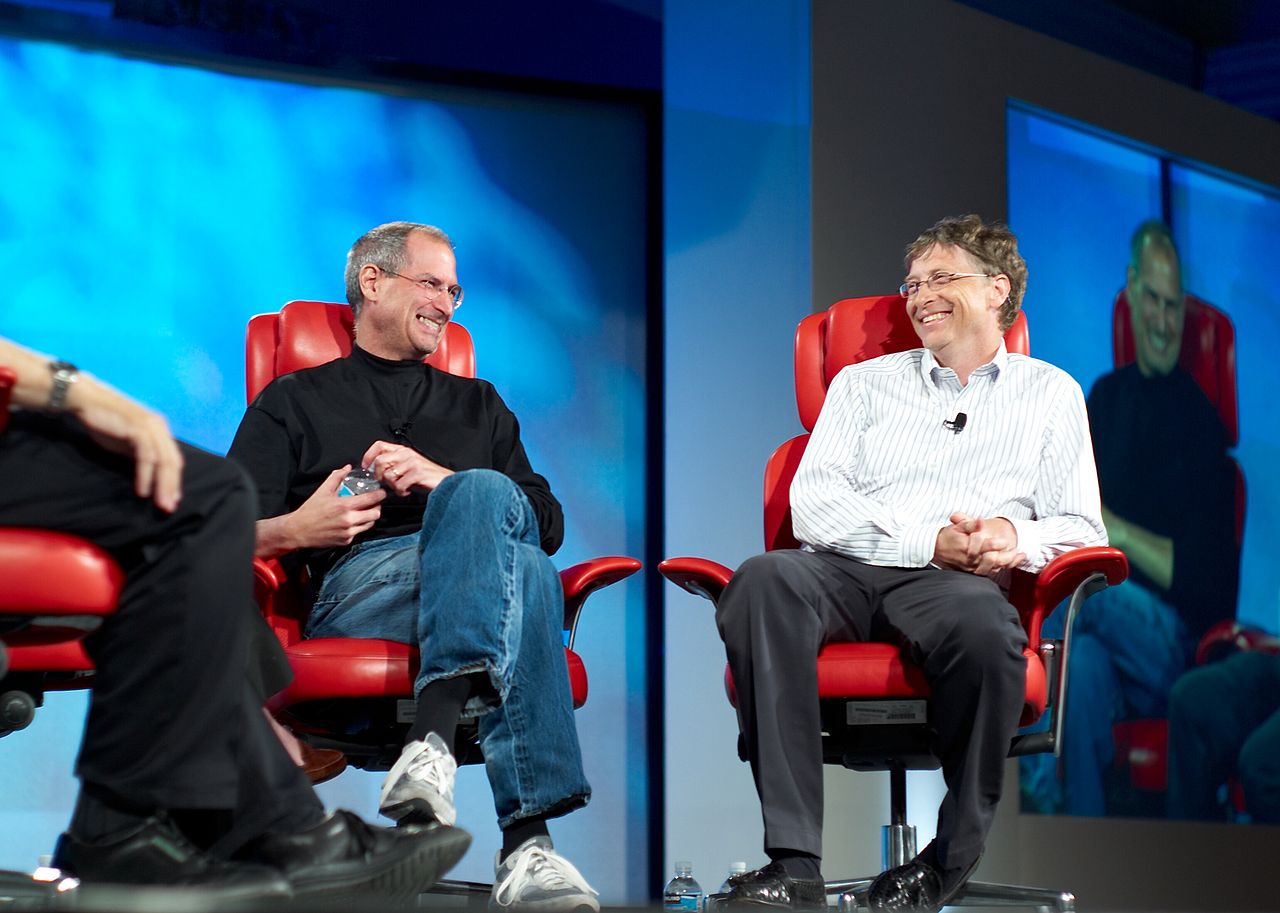A business that makes nothing but money is a poor kind of business”
Henry Ford.
“Improving Employee Wellbeing”. “Creating Social Good”. “Sustainable Procurement and Consumption”. “Fair Pay for Fair Work”.
These are just some of the slogans used by people talking about Corporate Social Responsibility (CSR, hereafter), which refers to practices benefitting society at large, or developing a fair and transparent working environment.
The ‘people-planet-profit’ (3P or Triple Bottom Line) concept also falls within this ambit. It has been of great interest to businesses since the 1980s.
However, Milton Friedman once said ‘the business of business is business’ and rightly so in many regards, since the primary objective and also the responsibility of a business is to survive as a profitable entity, regardless of how socially responsible (or irresponsible) it is.
Nonetheless, one of the commonly ignored aspects of his work is that he added, “…shareholders want to make as much money as possible while conforming to their basic rules of the society”, and this brings the wider society into context.
Friedman’s classic work on the ‘the social responsibility of business is to increase its profits gained significant traction throughout the 1970s and 1980s, but clearly the ideal situation is where a business is both profitable and also meet the needs of other stakeholders. This creates a ‘win-win’ scenario, in addition to ensuring business sustainability in the long run.
Defining Corporate Social Responsibility
CSR can be viewed as a form of business self-regulation with the aim of being socially accountable and – to more cynical – being seen as a ‘good’ social entity. We live in a conscientious and environmentally aware society, where employees, customers, suppliers, and civil society in general, places significant weight on choosing and supporting organisations that prioritise CSR. CSR is also a way for companies to measure and control their impact on society.
CSR can be also be perceived as demonstrating how a business can be organised in a particular way that could empower them to act in a socially responsible way. So, indeed again, it could be seen as a form of self-regulation that could manifest in say, social or environmental initiatives or strategies, without compromising organisational goals and agreed stakeholder objectives.
CSR does not have to be a distraction from a company’s main goal, and instead could aim simply at aligning a company’s social and environmental activities with its purpose and values. Many examples in recent years show that CSR activities can mitigate risks, enhance reputations, and even contribute to the bottom line.
Contributions via CSR initiatives, therefore, can be both positive and negative (also known as externalities) to the economy, environment, and wider civil society.
There is increasing realisation among business leaders that companies should not choose to be driven solely and exclusively by profit, and that they have a responsibility to do what’s right, not only for shareholders but also to hit the Triple Bottom Line, i.e., people, planet, and global civil society.
Typically, CSR list four categories of responsibilities that organisations can cater for: environmental, ethical, philanthropic, and economic. Now we have examples of companies that rebranded themselves as B Corporation (B Corps), social purpose corporations (SPCs), low-profit limited liability companies (L3Cs), and a variety of ‘green companies’.
Creating Social Good
Research by Cone communication has shown that over 60% of US citizens expect businesses to participate in social and environmental change in the absence of government regulation. Interestingly, about 90% of surveyed consumers said that they would purchase a product because a company supported a social cause or environmental challenge that personally appeal to them.
These initiatives could many forms, including: proactive environmental efforts (e.g., reducing carbon footprints, recycling innovation, managing e-waste); funding philanthropy (e.g., Tom Shoes whose slogan is ‘one for one’, whereby they donate one-third of net profits to various charities, supporting physical and mental health); ensuring ethical labour practices, i.e. treating employees fairly and ethically, including employment outsourced in the supply chain; or finally, through volunteering. Thus, how Vodafone World of Difference Challenge has assisted community development in most parts of the world already.
There is an important caveat. While CSR may help brand the image of a company, if this does not come from a genuine moral conviction or altruism it can easily backfire, and lead to accusation of hypocrisy. So any approach has to be embedded in the core of what any company is doing.
Examples of CSR initiatives creating ‘social good’
An early ‘good’ CSR initiative was one taken up by Starbucks when they secured the ‘Fair Trade foundation’ certification. Thereafter all of their products had the Fair-Trade logo (resembling the Chinese ‘ying-yang’ sign) on them, this logo insists that farmers and everyone else in their supply chain are all paid fairly and are free from illegal exploitation.
Starbucks remains the largest purchaser of fair-trade-certified coffee, globally. Fair-Trade initially started as a social movement, saying their goal was ‘to help producers in developing countries achieve better trading conditions and to promote sustainability.’
For businesses, it is a matter of being fully aware of their responsibilities towards the society as much as being about delivering value for business and society via creating social, environmental, or economic (similar to people-planet-profit) benefits, thereby ensuring the sustainability of a company.
Interestingly, most of the business CSR initiatives these days are connected to SDGs or the global development goals. This could be about ensuring good health and well-being through a work-life balance, safety at the workplace, or supporting mental health of employees.
Amongst other approaches are: decent work and economic growth (i.e. global goal 8), particularly in reference to the sharing or ‘gig’ economy. where the workers are not considered to be ‘employees’ and therefore not guaranteed benefits or entitlements; Responsible consumption and production (i.e. global goal 12), which does connect back to the Starbucks example, and also how certain University campuses in the US were terming ‘fair trade’ universities where students and academic faculty would only buy and consume products labelled fair-trade.
Also, we have partnership for goals (i.e., global goal 17) where newer forms of institutional arrangements are created and sustained, moving on from the generic public-private partnership models, towards more inclusive and innovative ways of actor engagement via public-private-people partnerships.
Build it and they will come…
Lego has invested a fortune in addressing climate change, developing alternative energy usage, and reducing waste. Since this is also a part of the company’s philosophy, Lego’s environmentally conscious moves include reduced packaging, and also the use of sustainable materials.
This is somewhat similar to Ben & Jerry’s, whose core goals have always revolved around supporting local dairy farmers and investing in the community where they have operations.
Johnson & Johnson, another familiar brand, focuses heavily on reducing its environmental impact by investing in various renewable energy sources. At the global level, they also work towards providing cleaner and safer water to communities.
Proctor and Gamble (P&G) is another example since their development of the two laundry products, Ariel and Tide, were sourced based on identifying environmental problems. Their research demonstrated that the most significant environmental impact that our laundry has is the energy used to heat the water in washing machines. 90% of the energy in a load of wash is expended on heating water, contributing to about two-thirds of all the greenhouse gas emissions in the Tide lifecycle. So, they developed products that could easily use cold water for washing, thereby reducing the total carbon emissions significantly as well as helping to save up to $150 a year on household energy bills.
At the same time, it is not so much what the companies do, e.g. becoming environmentally friendly or ‘going green’ in its operations, it also about helping to generate a sufficient amount of awareness across society. For example, through adverts around packaging of P&G’s product Ariel would inform customers how to save energy by turning down the washing temperature on washing machines to thirty degrees Celsius.
Similarly, Plan A by Marks and Spencer (M&S) has the goal of building a sustainable future by enabling their customers to have a positive impact on wellbeing, communities and also the planet through everything (process and product) that the company does. For example, in spring 2021 they launched their most sustainable denim range that was made using 86% less water, kinder chemicals and 100% responsibly sourced cotton. During the pandemic, the company distributed more than 11.8 million meals to those most in need and also raised £8.3m for NHS Charities Together in the UK through their M&S rainbow sale.
No Longer Optional
In recent years, however, companies cannot brag about ‘good’ practices and their ‘greenwashing’ philosophy anymore since the EU has now developed product requirements criterion; an environmental policy audit system for organisations; and EMAS certification, as a way of governing progress and control of eco-management.
So, what was considered to be a ‘proactively good’ social action by a company is now somewhat mandatory by law. For example, the EU’s principles for global trade and sustainable development, development of sustainable development criteria and CSR in individual trade agreements can impact sustainability assessments of trade deals.
Over the years, however, there has been numerous scandals around ‘brand image’. Among the questions we should be asking of businesses would be: What does a good corporate citizen mean? Is ‘profit’ a dirty word? How much should society pick up the ‘external’ business costs such as pollution? Does society really care about ‘fair trade’ or getting a good value in price and quality suffice? How are ethical decisions made by businesses?
Another important issue is how we address all these questions before jumping to conclusions based on subjective judgment and at times, situational ethics.
Cases of workers exploitation, harsh working conditions, paying a wage that is lower than the statutory minimum wage are plentiful. From the customers’ perspective, organisations are not always transparent and honest. A plethora of issues include: false labelling, misleading pricing, quality differentiation, misleading information on packaging and advertising, and in worst cases, dumping products.
Greenwashing
The term ‘greenwashing’ was coined in 1980s by Jay Westervelt, which essentially means companies either misleading consumers about the green or environmentally-responsible credentials of a product or service, or misleading consumers about the environmental performance of the company.
Then the question turns to whether companies ‘should’ tell customers everything. Corporate Governance plays a huge role in determining whether a school of thought that dismisses CSR altogether dominates.
There is also a widespread assumption that businesses cannot be trusted, and that terms such as ‘sustainability’ or ‘community development’ are meaningless concepts for multinationals. It is interesting that the two key contrasting views that we come up with when reviewing CSR comes from two individuals, Milton Friedman and Edward Freeman.
Briefly, Milton Friedman believed that businesses need to simply keep their shareholders and business owners satisfied, while Edward Freeman believed that businesses should be run for the benefit of all stakeholders (employees, customers, suppliers, civil society, government amongst many others).
Stakeholders vs Shareholders
The utilitarian philosopher Jeremy Bentham once opined that ‘action is best that produces the greatest good for the greatest number’.
In the context of CSR, it is also a matter of fact that satisfying different stakeholders while maintaining profit isn’t everything, the idea of ‘contractarianism’ is equally relevant which is when no action by a business should cause uncompensated harm to ‘anyone’ else. So, it is also about the rights and responsibilities of a business. This is clearly not a black and white area, although dismissing CSR may seem an easy idea.
For example, every stakeholder wants a ‘good deal’ for themselves. Employees want good pay, customers want value for money, suppliers expect a decent contract and fair prices. But this leads to inevitable friction. While customers want low prices, employees expect good wages. However, good wages lead to higher costs, thereby increasing the price of the products, which ultimately makes a customer unhappy.
Similarly, suppliers want a good price for their supplies, which again could lead to higher costs (e.g. Starbucks works with the Fair-Trade Foundation), while a high price could leave a customer unhappy. Whether we take the example of a multinational or an SME, these challenges are common and unavoidable while also illustrating that a business cannot possibly satisfy all stakeholders. Therefore, the question becomes what CAN a business do?
Three options, are possible: deliberately ignore all stakeholders, except shareholders, and go ‘flat-out’ for profit; pretend to take account of stakeholders and still go all out for maximum profit (e.g., ‘greenwashing’); engage with stakeholders and balance their ‘aspirations’ while not losing sight of profit.
Bad Actions…
Foxconn has been in the news with CSR scandals for over two decades now, particularly for violating employment laws.
The company used to make Apple products in China and more recently Amazon’s Echo Smart Speakers and Kindle Devices. However, there have been reports of workers in hazardous factories run by Foxconn who are given sick or holiday pay. They can also be fired without notice during lulls in production. 40% of the staff that Foxconn used in their factories are ‘agency staff’ or ‘dispatch workers’. Those who worked overtime were paid at the normal hourly rate, which is illegal since both under Chinese law and even Amazon’s supplier code of conduct says that workers should receive time and half rate for such work.
Foxconn has a history of worker exploitation, witnessed after a wave of workers committing suicide back in 2010, when Apple used to heavily outsource their manufacturing of iPhone and iPad to them. Besides, wage and worker exploitation, Foxconn also had serious factory accidents where workers died of electric shock in 2011, and also a factory explosion that killed four people and injured eighteen others in the same year.
On top of that there have been frequent employee riots, use of underage (from as low as eight years-of-age) and illegal workers, along with violation of local laws. All of which has been to reduce costs.
More recently, the company had invested in robotic technology to replace workers in manufacturing and to tackle the diminishing trust in the company name. At some level we (as customers) should also wonder, how much and how badly do we really have to use the products of these giant companies such as Amazon and Apple?
Just Do It?
Similarly with Nike, 593,468 hours of overtime work went unpaid between 2010-2012 in Indonesia, which sent shockwaves through the Indonesian labour movement. Eventually after strikes and negotiations, Nike agreed to pay off $1 million to about 4,500 workers at a Nike plant in Serang, Banten in Indonesia.
Again, there is nothing new about Nike’s labour exploitation and maintenance of sweatshops since the 1970s. From the early 1990s reports were flooding in detailing poor wages, child labour, and harsh working conditions in Nike’s outsourced factories (called ‘sweatshops’).
After initially shrugging its shoulders, Nike said it was up to the outsourced parties. But subsequently, as the brand suffered, the company started auditing their factories for occupational health and safety. Their ‘bad reputation’ as an employer made them go to greater lengths than usual, while competitors adopted similar procedures.
In the mid-2000s, several ‘anti-sweatshop’ groups were established, and at Brown University, Nike had to pull out of a contract with the Women’s ice hockey team after a student activist group demanded the company establish an ethical code of conduct. Similar cases occurred between 2010 and 2016 in Vietnam, Taiwan, Thailand, Indonesia, and China, while at the same time the community activities on these matters became stronger, through fair labour associations and workers’ rights consortiums which exposed how child labour represented 70-80% of their workforce.
Further examples can be drawn from fast fashion companies such as Zara, H&M, Gap, Primark, who all adopted exploitative labour practices at one time or another.
Balancing Priorities
Multinationals mentioned in this article are major players in our economies. Many multinationals have exploited workers or like Google, Coca Cola, and Starbucks systematically exploited tax loopholes across the world over the years. Of course many of these companies have simultaneously done some ‘social good’ with their CSR or ‘responsible image’ campaigns. This makes any assessment of the role of CSR difficult and prevents us from drawing definitive conclusions, such as that multinationals are inherently bad, or perform a social good that may be a part of the company’s culture.
CSR activities can be designed in such a way as to align with the companies’ business purpose, the values of the companies’ key stakeholders, while identifying the local or glocal needs that the company (local or global) can serve in a particular community where they have their operations, among other considerations.
Thus, for example, in countries that lack sufficient government funding for public health, business organisations can step in with philanthropic funding to develop clean water and sanitation. A strategic CSR can still create various levels of continued ‘win-win/s’ for a company, its wider list of stakeholders, and the community.




